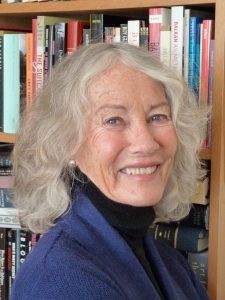 After several failed marriages, Patricia went back to school in midlife and became a psychotherapist. It would take a lengthy correspondence with her aunt, a Franciscan nun living in Central America, to coax Patricia into writing her memoir, Motherlines
After several failed marriages, Patricia went back to school in midlife and became a psychotherapist. It would take a lengthy correspondence with her aunt, a Franciscan nun living in Central America, to coax Patricia into writing her memoir, Motherlines
Tell us a little about your background…
I grew up in Madison, Wisconsin and entered the University of Wisconsin (UW) in 1958 as an 18-year-old woman with no plans for a future career. The joke going around at the time was that girls went to school to get their MRS Degree. But I had no plans for that either. I majored in English literature because the only thing I liked to do was read books. What I wanted or could imagine for myself was far beyond the horizon. I had inherited heroic ambitions from my father, but they were hardly available to me as a female coming of age in the ‘50s. All I saw were women making the post-war baby boom a reality. It was not unusual in our neighborhood for women to have six or seven children.

With Mom, dressed alike, 1943
My father was a strange hybrid, a house builder who had graduated from UW, a hero of his own mythology who heaped his nebulous ambitions onto me, the oldest of six children. He expected me to take Latin so I would know word derivations, encouraged me to read books (preferably Thomas Hardy’s dark pastorals), valued higher education, expected me to go to the University, but lacked the financial resources to pay my tuition. That was left up to me to figure out.
My mother was a high school graduate, a good woman, a housewife with all the attendant duties and obligations of a large family. She was a “people person” and did not read books. My family was Catholic and I was sent to Catholic schools through high school, which in those days was quite repressive, especially regarding issues of sexuality. Mortal sins! All of it! Having a heat-seeking body, I resisted this education mightily and was more than happy to enter UW, even (or especially?) when the nuns warned it was “a hotbed of free love and communism.” I was also admonished not to take philosophy classes or I would lose my faith, but this was already accomplished. I had no faith in this religion that denied the pleasures of the body. Unfortunately, this pleasure came at a price—birth control was not available to an unmarried student—and I underwent two illegal abortions, which were not only criminal acts at the time, but scary, traumatizing and, as it turns out, life altering.

At 20, one of the first woman lifeguards in Madison, Wisconsin
My senior thesis at UW was on Virginia Woolf. Although the University was renowned for its English Department, I had been discouraged from using Woolf for my thesis: As a woman, she was considered “outside the canon,” a minor writer. I persisted and graduated from the University with a degree in English Literature. Soon after, I converted to Judaism, went into the mikvah, the ritual bath, said Hebrew prayers, and stood under the chuppa for a Jewish wedding to a history professor, not knowing that the marriage had a six-month expiration date.
After graduation, I worked in a residential treatment center for disturbed kids. I did not have a social work degree but I had worked part-time while in school in a black community in south Madison—a white girl of nineteen with the only key to their neighborhood center. This was in the late ‘50s and early ‘60s, the beginnings of de-segregation in the south, and a time when terrifying images of hoses and dogs and deep racial hatred were everywhere in the paper and on TV. I participated in civil-rights sit-ins at the State Capitol and developed a nascent sense of social justice.

When my six-month marriage came to an end, I was unmoored. On an invitation from my maternal aunt, a Franciscan nun who was directing a Catholic girls’ school in Costa Rica, I quit my job, got my first passport, and took my first flight outside the United States. My aunt Ruth, my mother’s sister, was twenty-five years older than me. She was very radical in her thinking, very open-minded and non-judgmental. Her religious order was on the brink of a revolution. Those nuns were on fire with ideas of social justice, and within a few years they were living in apartments, dressed in civilian clothes, and studying Noam Chomsky and Liberation Theology.

I stayed for two months in the convent with nuns dressed in full habits, which awakened a longing to be a part of something larger and more important than the sorry dramas I had been involved in. I turned 25 in San Jose, Costa Rica. Given that I disavowed Catholicism, and was now disaffected from Judaism, I was not a good candidate for the convent, although the desire to live with a group of committed women stayed with me for the next 20 years.
When I returned to the States, I still had no map for my life. I married a sociology PhD candidate and we packed our possessions into our 1956 Chevrolet, and drove from Wisconsin to California in the summer of 1968. We passed through Haight Ashbury and I noticed that I was a little too old and a little too responsible to become a full-fledged hippy. I got a job as a social worker at a residential school for boys. This second husband pursued his degree and his depression while I drudged as the breadwinner. This marriage lasted five years—only to be followed a few years later by marriage number three.

Heading to Palo Alto, 1982
This marriage seemed hopeful; a master woodworker with a trust fund. We designed and built studios and a house in central California. This was in the ‘70s during the renaissance of craft fairs, and I left social work and became a fiber and fabric artist. This pastoral blew up after six years with an unwanted divorce. Three strikes in the marriage game and I was out.
With the divorce came the loss of a lifestyle which had seemed even at the time beyond my wildest dreams: a hand-built house on ten acres on the Central Coast of California, my own art studio where I made handmade paper and did large batik works on silk, a community of artist friends. What was left in the rubble was an acceptance letter from the Master of Fine Arts (MFA) Program at UCLA, an offer of a short-term storefront studio sublet in Venice Beach—and a good divorce settlement.

Handmade paper
Presented with a third divorce within the space of 15 years, my parents were not sympathetic. They were embarrassed. How to explain this wayward daughter? And they were disappointed. They had pinned their hopes on this third husband, as had I. They assumed the divorce was my fault. How to explain that he drank too much and slept with someone else in our marriage bed? They were glad that I was back in school, even if they didn’t understand why I would pursue an exotic and useless degree in art which everyone knew was not going to be a money-maker.
When did you begin to think about making a change?
Awakenings are most often violent. Being shoved onto the trembling threshold at midlife was terrifying for me—a time of stripping, unmaking, unraveling—a time of wrenching misery, hunger, desire, magic, and danger, potent with possibilities but no insurance policy for the future. A state of spiritual emergency. The handmade house was sold, the two elderly dogs euthanized, the material possessions dispersed. It would take four years of reinvention to achieve the MFA degree and a budding sense of myself as an artist and a woman. I was 42 when I graduated. But being an artist was only a step toward my next act.
With each marriage my surname changed, and with each divorce I promptly shed those borrowed names as if I had been living under an alias.

With Jim, my life partner of 31 years
What is your next act?
I am a psychotherapist and an author.
My degree in Counseling Psychology gave me a profession in which I could offer all I had learned about the creative process, dreams, psychology, the soul’s journey. I work with women, primarily with creative women, artists, and writers. My practice has supported me for the past 30 years.
A critical aspect to my next act was finding a life partner who shared my desire for creative work. When I met him, I discovered we had almost matching overstuffed bookshelves, and we shared a deep interest in dreams, mythology, psychology, and a simple way of life. Neither of us had children. I was living in California and he lived in Maine when we met. The connection between us was immediate. Your coast or mine? Maine seemed to be the best place for us to set up a home. He had never married and I had been evicted from the marriage plot years ago, so we decided to forgo that ritual and had a commitment ceremony, presided over by my aunt Ruth, the nun. That was over thirty some years ago.
Living in Maine with a beloved companion and establishing a psychotherapy practice were the conditions I needed to publish my first book, at age fifty. Twenty-five years later, I have published five books and numerous articles and essays. My four books have been non-fiction and are focused on women, creativity, dreams, mythology and psychology. My fifth book, Motherlines: Love, Longing, and Liberation, is a memoir about my midlife and in many ways it tells how my next act evolved. Watch the trailer for my book here.
My creative life remains vibrant and sustaining. Writing is a solitary pursuit for the most part. It requires time and energy and focus. I find that the psychotherapy practice engages my deeply relational side, so I am fortunate to have both the practice and my writing.

How did you become a therapist?
After graduating from UCLA with an MFA, I was still uncertain as to my direction. I had used most of my divorce settlement for the MFA. I was 42 and needed an income. When an announcement came for a program that offered a degree in Counseling Psychology with an emphasis in Archetypal Psychology, the study of myth and dreams, I immediately applied. I had just enough money left for the tuition. This would give me a degree so I could work with people, and more importantly, I intuited, it would give me a way to begin writing. I would have a language and a lens, psychology, dreams, myth.
How did you become a writer?
When my third marriage ended, I immediately salvaged my family name and began a journal and a voluminous correspondence with my aunt Ruth. I never kept journals during the marriages. Like silence and speech, marriage and private thought could not coexist—not because I feared someone would read my words without permission, but because I feared hearing my own voice.
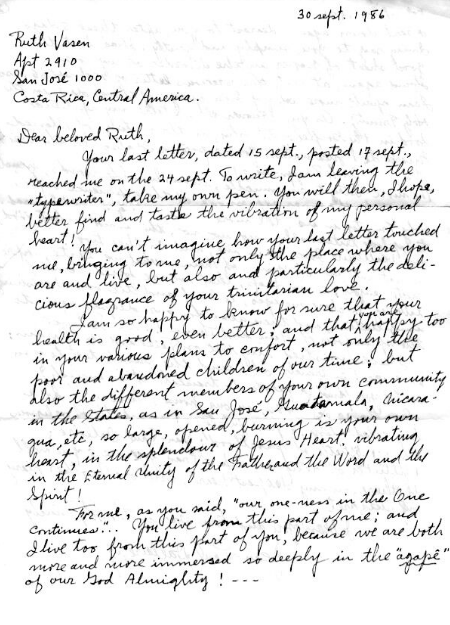
My correspondence with my aunt Ruth was another outlet for my writing. By their very nature, letters are written alone and read in solitude. Many writers have relied on letters to help them find their voice, to experiment with ideas, to communicate their feelings. Terry Tempest Williams says, “What needs to be counted on to have a voice: courage, anger, love. Something to say, someone to listen.” In the correspondence with my aunt Ruth, I had found someone to listen and I was gaining a voice. But letters not only reveal, they can also conceal, and it took me a few years to trust the bridge of words that Ruth and I were constructing to hold my full weight.
When I was getting an MFA in art, I never considered writing as a possibility for my future. The MFA was challenging enough. But in my journal during the four years at UCLA, there was a voice that kept asking, “What about writing? Shouldn’t you be writing instead?” The art was mute. I wanted words! I began writing poetry that I shared only with my aunt Ruth, who encouraged my writing no matter its form. As it turned out, the MFA was only a prologue to my next act—images before words.
Writing was one thing, much desired, but finding my voice was another. It never would have happened without the great fluorescence of feminist writers in the late ‘70s and ’80s. Mary Daly, Susan Griffin, Audre Lorde, Adrienne Rich were just a few who blew my mind open with their words, their language, their critiques of patriarchy. Through their writing, I finally had a way to understand myself as a woman in a culture that constrained my voice, if not repressed my being, not to mention my female body. With their words, I underwent what can only be called a spiritual conversion. Feminist bookstores abounded with their works and others and as a new convert I felt as if I had found my ticket to heaven. I cannot adequately express how truly revolutionizing it was to read these women writers who were giving voice to what I had always felt or intuited.

My UCLA thesis exhibit, 1982
How did you come to write your memoir?
I never intended to write a memoir, much less a spiritual memoir. I didn’t want to write about myself, I wanted to write about my aunt Ruth, the nun. All the women in my motherline were good suburban housewives. My aunt’s life, or as much as I knew of it, was anything but conventional, and it fueled my imagination.
Ruth had gone to China in her early twenties as a missionary just as the Japanese were invading the country in 1938. Along with other missionaries, she was interned in a Japanese concentration camp during the Second World War. While in the camp, she met a Canadian Jesuit priest, and they fell in love and stayed in love although they remained in their respective religious communities. After the war, Ruth spent most of her life in Central America. She spoke fluent Spanish and was often in countries that were fighting dangerous “dirty wars”—Guatemala, Honduras. Her theology was liberationist, her politics were radical, her mind and heart were open. Ruth was the perfect subject for an aspiring writer.

Sister Ruth in Guatemala
We had been conducting a voluminous and increasingly intimate correspondence for six years, and in 1984 I wrote her saying I felt inspired to write a book about her life. My request was full of hubris. At the time, I had not written anything except school papers and letters, much less had anything published. As a newly minted feminist, I was driven by a desire to lift the women in my family out of the ditch of obscurity. More hubris. I assumed these women needed lifting. No one had ever asked me for such a favor. Ruth never agreed or disagreed with my project, but on a 2-week visit with her in San Cristobal, Mexico, she unpacked all her stories, which I scribbled into my journal.
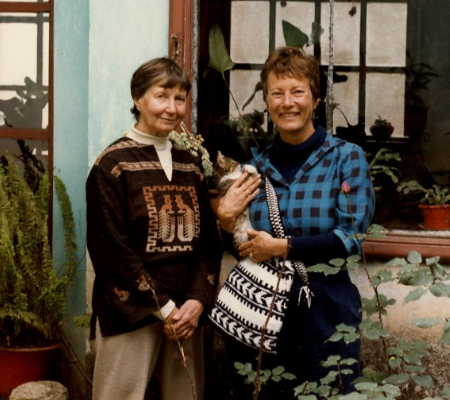
With Ruth in San Cristobal
In 2005, a few years after she died, and after I had written three books, I finally got around to writing Ruth’s story. The biography idea never took hold, so I began writing her story as fiction. I was a writer, even a published writer. The fact that I had never written a piece of fiction did not appear to me to be an obstacle. I was seduced by the idea of fiction; I thought it would give me artistic freedom. Several years and a lot of work later, my editor said, no dice. “I don’t know what makes this woman tick.” Whoops! Then my agent said, “Patricia, this is your story—and it is a spiritual memoir.” Yikes! Sometimes writing fiction is a way to avoid writing a memoir.
When I made the switch from fiction to memoir, my aunt Ruth had been dead for ten years. But I had the access code to the blood bank: 200 pages of her handwritten letters, which could transfuse her back to life. Since the book had now turned into a memoir of our relationship, I also had to exhume the woman I was during our letter-writing years (1978–1990). My copious journals from that time were the raw footage of my midlife, my Gray’s Anatomy. Underline raw.
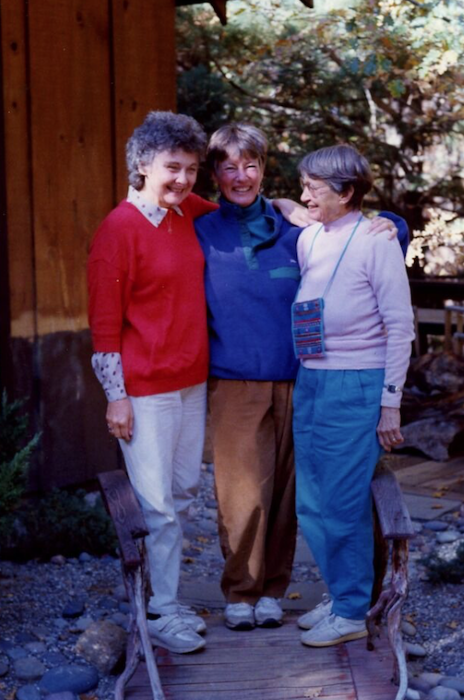
With Ruth and Francis, at a retreat run by Francis in California, 1990
I felt like my memoir was an assignment from the soul factory. Otherwise, why would I have committed so much time and energy to it? Personal will and ambition has its limitations. The memoir was in service to something larger. I hope my original intention of lifting my female lineage out of the ditch of obscurity has been met. I hope I have done the women, including myself, justice. I add the memoir to the greater narrative being told of women’s lives. But there is more to it than altruism. I quote William Blake: “If a fool persists in her folly, she will become wise.” I have taken liberties with Blake’s gender but not with his message. In my persistence, I hope I have gained a grain of wisdom.
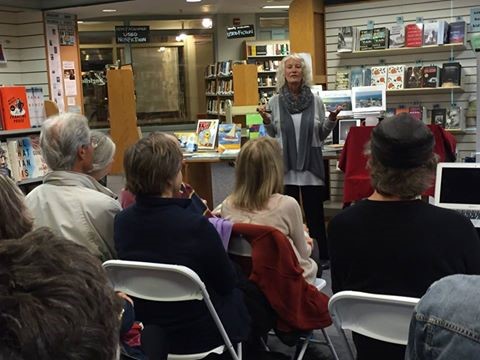
Speaking about Motherlines
How supportive were your family and friends?
When I was visiting my parents one summer, I heard my father say to my mother, “She’s 44, you think she would have found herself by now.” Right!
I think my parents were relieved when I moved to Maine in 1986 to be with my partner and begin my psychotherapy practice at Women to Women, a women-owned health clinic. When I published my first book in 1990, my father had been dead for three years. My mother was proud and showed my book around, but I don’t believe she ever read it. Just having my name on the book was enough for her.
Earlier, my five younger siblings were all involved with their own lives and probably the subject matter of my books—women’s psychology, mythology, dreams—was not something of interest, although they, too, were proud of my accomplishments. Over time, their understanding and interest has grown and I can count on them always.
I am an introvert, so a few good people go a long way with me. I have always maintained a small group of women friends who are supportive of my work and I am part of a larger network of colleagues, both in the writing world and the therapy world, that provides all sorts of support when I need it.
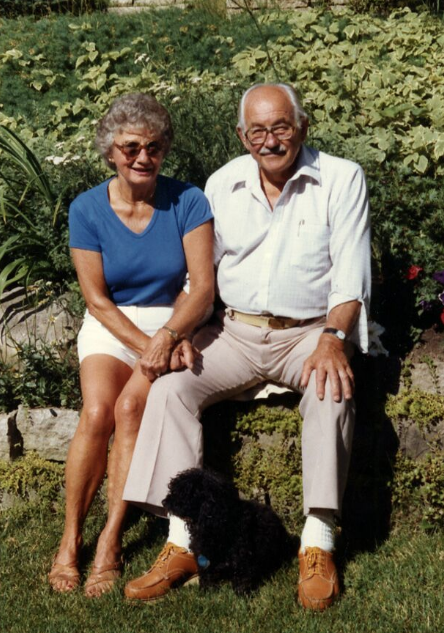
My parents
What have you learned along the way?
When it came to my next act, there was never one moment of choice, there were many, many, sometimes seemingly unrelated choices made along the way. Ultimately, I believe that decisions are not made per se. They reveal themselves, unfold through time, and take shape from steps already taken. All one needs is the next footfall. Rarely do we get the whole map. Even more rarely is there a final destination. Confidence is important, in the root meaning of the word, “with faith.” So faithfulness to one’s calling is a necessity. A next act is a love child, conceived in desire, born without guarantees into an unknown future.
What advice and resources can you share with other would-be writers?
There were many steps leading to becoming the writer I am now. One of them was not an MFA in writing! I have attended several workshops, gone to a number of writer’s conferences, and worked with good editors. Writing does entail studying the craft. But finding one’s voice, and one’s subject is something that can’t be taught; it must come from the internal workings of one’s psyche and soul. Many writers pursue degrees, have writer’s groups, attend many writing workshops. There is much to learn, always. I am a woman of the book. Books have been my best teachers, friends, life-savers, lighthouses in a storm. I hope my own books have been that for others. When I hear someone out of the blue tell me how much my books have meant to them, I feel like I have fulfilled my lot in life.

My bookcase
Sometimes when people ask how I find the time to write, I say, it’s like having a lover who wants you all the time. It is often more a case of finding the time for everything else! There is a great deal of joy in the process but also there are hours, days, weeks, years of solitary labor. Luckily I have never had a dry spell or lacked for the next piece of writing to appear. There is always something in the pipeline.
Seeing my work published, whether as an article or a book, gives a great deal of fulfillment; it brings the creative process full circle to share my words with my readers. I am not immune to doubt or the occasional wobble. I have had to give up a big project that I thought was fiction and recast it as nonfiction. It wasn’t a big laugh to take all those hard won pages and turn it into nonfiction—unthinkable at first. It was an editor’s suggestion. It turned out to be the exact thing that needed to happen. Sometimes a writer is the last to know what she is doing!
The writing conference that I like best is AWP’s (Association of Writers and Writing Programs) annual conference and book fair. It is overwhelming, exhaustive and exhausting, thousands of people, diverse in all ways, featuring famous presenters alongside interesting panels with lesser known ones. And there is an enormous book fair featuring hundreds of publishers selling their books. Something for everyone. It’s like learning a language through immersion. I also enjoyed the Faulkner Fest in New Orleans. High-end presenters, agents, and entertainment. A great gumbo of an experience, not to mention its location. I met my agent there.
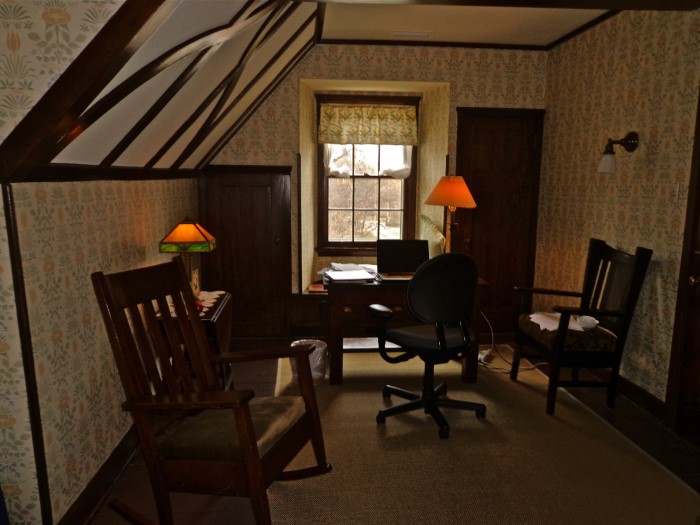
My room at Ragdale Retreat
Finally, I have benefitted greatly from two writing residencies at Ragdale in Lake Forest, Illinois. There is nothing like being given a month to write, a room of your own, a small community of other writers and artists, and delicious food, to make tracks on a project. There are other residencies available in the US, Europe, and Mexico, but Ragdale is the one for me. Tried and True.
There are many writers’ magazines now. AWP sponsors The Writers Chronicle with good interviews, essays on craft, and a back section with listings for contests, conferences, and other information. And of course there are books that encourage writers. I could make a booklist of my favorites. Every writer’s process is different, and I like to read about the writer’s life. Certainly in the early days, there was Natalie Goldberg’s Writing Down the Bones: Freeing the Writer Within, Anne LaMott’s Bird by Bird: Some Instructions on Writing and Life
, and Julia Cameron’s, The Artist’s Way: A Spiritual Path to Higher Creativity
. They all pointed out how a creative practice is just that – a practice. There is a need for commitment, self-awareness, rituals such as morning pages, mantras, and meditations, to keep a person on track.
Lately, I have been impressed with Liz Gilbert’s Big Magic: Creative Living Beyond Fear. She offers a wise and irreverent approach to the writing life. When writing my memoir, I looked to Brené Brown’s The Power of Vulnerability: Teachings on Authenticity, Connection and Courage
for courage. Nothing is more vulnerable than writing a memoir! Sort of undressing in public.
There were and are so many things I have learned by committing to a creative work. Building an ego and making money are not two of them! As in all relationships based on love, humility and perseverance are the primary virtues that get cultivated, as do dedication, willingness to engage, allowing for periods of unformed ideas, being able to reverse course when necessary, believing in the project, small or large, and being open to a certain amount of pure magic. Like building a good set of muscles, some things get easier over time, but coasting along is not an option. The Muse will take care of that in a hurry. Which is to say that my next act will be the one where I make my exit.
The only general advice possible for someone considering her next act can be found in this poem by William Stafford.
The Way It Is
There’s a thread you follow. It goes among
things that change. But it doesn’t change.
People wonder about what you are pursuing.
You have to explain about the thread.
But it is hard for others to see.
While you hold it you can’t get lost.
Tragedies happen; people get hurt
or die; and you suffer and get old.
Nothing you do can stop time’s unfolding.
You don’t ever let go of the thread.

I did Vision Quest in midlife, and later co-led these ritual journeys into the wilderness
Looking back, do you wish you’d done anything differently?
There is nothing I regret, no steps I wish I hadn’t taken, or things that I wished hadn’t happened. Being a writer (and a psychotherapist for that matter) allows me to use all the experiences of life as grist for the mill. I see the necessity, even in what could be seen as missteps. This is a great consolation, as there is nothing unhappier than feeling like one’s life has been riddled by mistakes. As long as there is life, there is the possibility of redemption, and even revelation.
Contact Patricia Reis at preis@midmaine.com
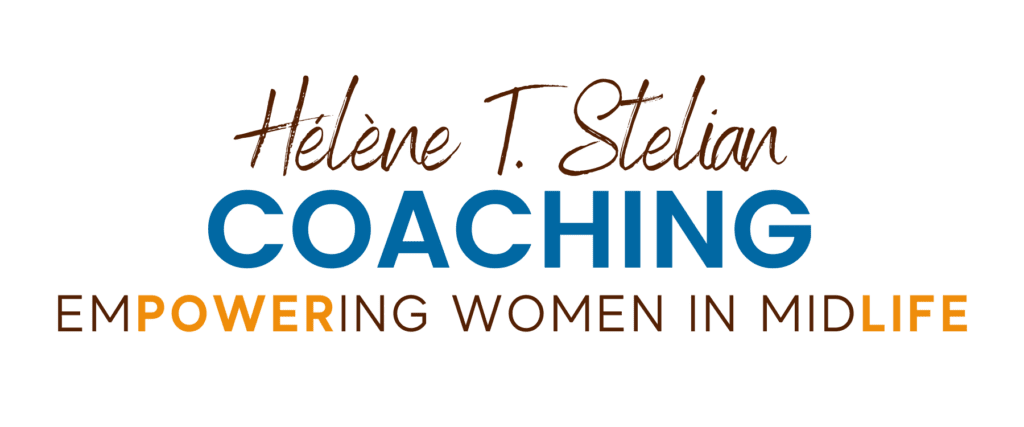
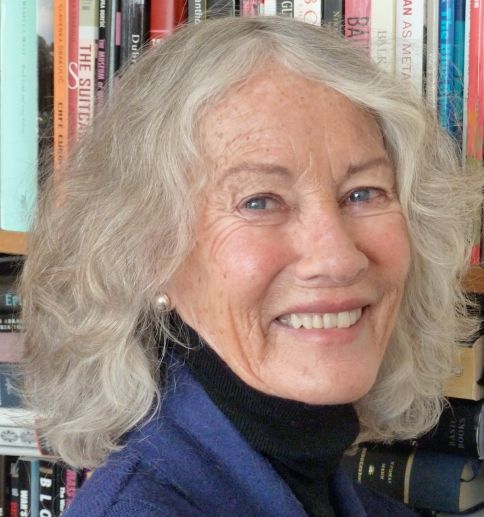
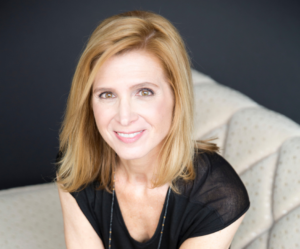
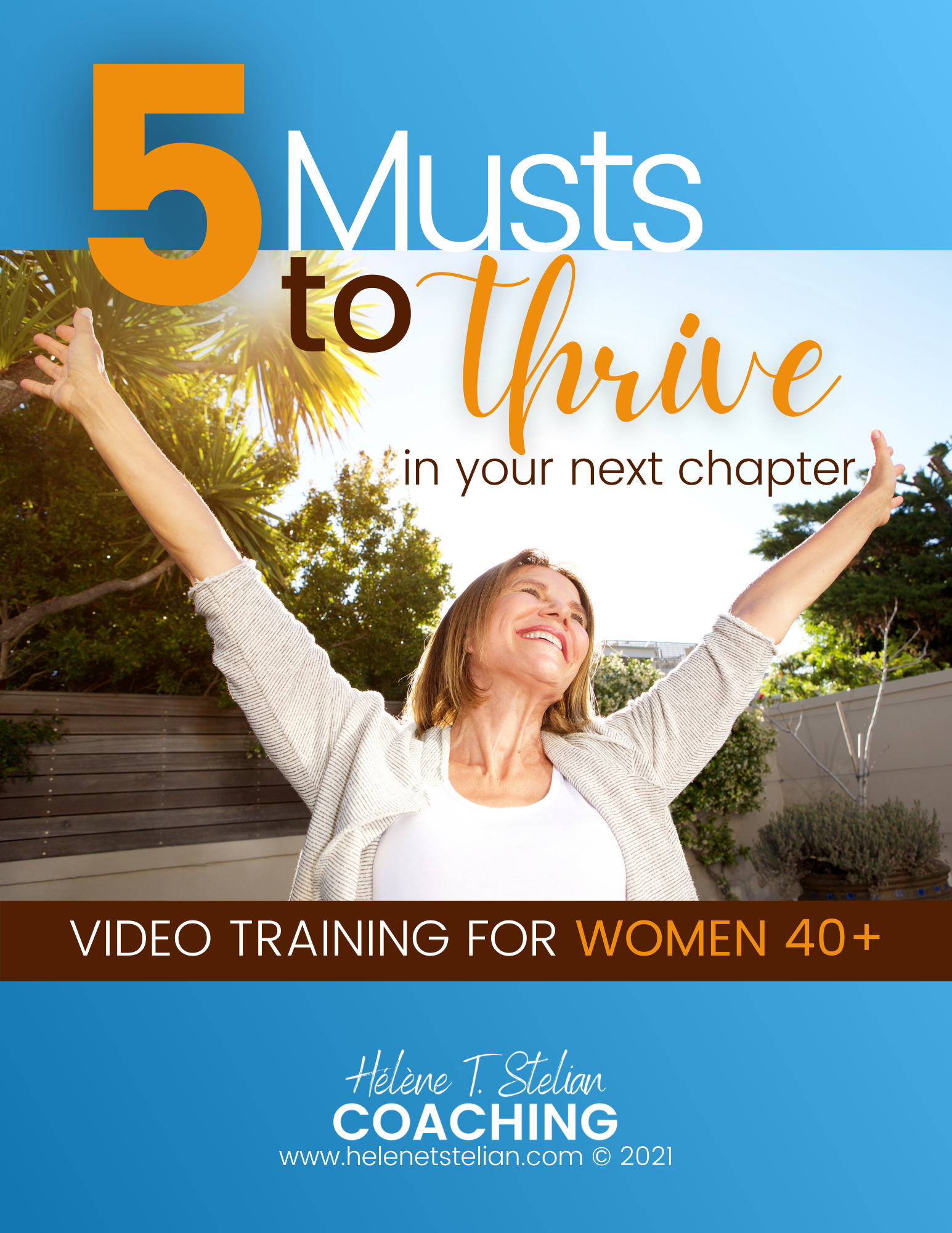
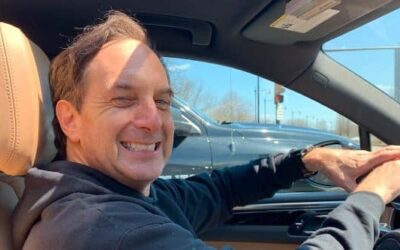
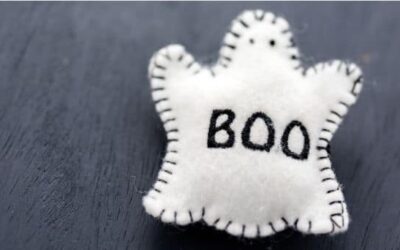

Patricia,
Your story has touched me more than I can express here! I will read it a few more times, take some time to digest with each reading, then pause…then read your memoir for grounding and inspiration.
Thank you for sharing and for your courage and vulnerability.
Lisa
Hi, Lisa, Thank you for your comments! So appreciated! I was inspired by Terry Tempest William’s quote: What needs to be counted to have a voice? Courage. Anger. Love. Something to say. Someone to listen.
Would love to hear from you after you have read Motherlines.
brilliant and inspiring… from one wayward daughter to another. 😉
Wayward Daughters Unite! So good to hear from you! Hope Motherlines will resonate for you! Thanks for chiming in!
What a fabulous journey of self-discovery! I can’t wait to read Motherlines!
Thanks, Lee! I hope this “preview” of Motherlines will whet you appetite for the book! Carolyn Heilbrun once said, “Women can catch courage from the women whose lives and writings they read, and women call the bearer of that courage friend.” We can never have enough stories!
My name is Castor Angel from USA. I’m 43 years old i got married at the age of 25 i have only two children and i was living happily. After five years of my marriage
my husband behavior became so strange that I don’t really understand what was going on. He packed out of the house to another woman’s house and I love him so much that i
never dreamt of losing him, i tried my best to make sure that my husband get back to me but all to no avail, i cried and cried seeking for help. I discussed it with my best friend Alison and she told me she can help me. She told me of a man called Dr. Odunga, she told me he is a very great man and a real man that can be trusted and there is nothing concerning love and Cancer issues he cannot solve and she told me how he has help her and countless number of people in
restoring their relationship. I was really convinced and went online to search about him. I quickly contacted his email address at odungaspelltemple@ gmail. com I explain all my problem to him, he told me that I should not worry that all my problems will be fine. Presently, I am very happy and I got my husband back to me now and we are living with so much love for each other